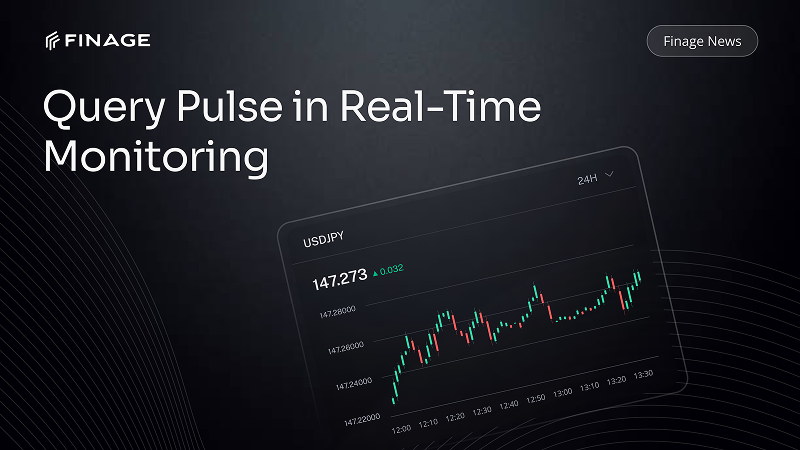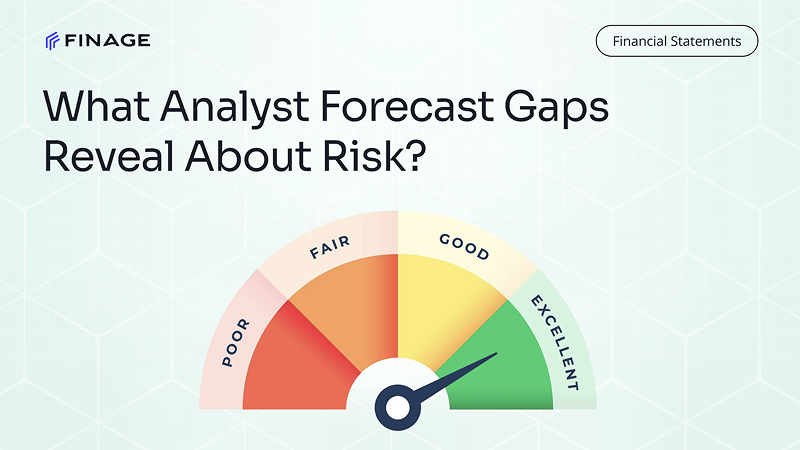The Impact of Forex Spreads on Trading Algorithms
13 min read • June 1, 2025

Introduction
In forex markets, spreads are more than just a transaction cost — they’re a dynamic pricing factor that directly affects how your trading algorithms behave. A few pips of difference between the bid and ask price can decide whether a strategy is profitable or fails to execute altogether. Yet many algo developers underestimate the real influence of spread mechanics on order timing, signal accuracy, and backtesting realism.
This article explores how forex spreads impact trading algorithms, from execution slippage to strategy distortion. We’ll break down key considerations for working with live and historical spread data, share common pitfalls in algo development, and explain how Finage’s forex API provides access to real-time, low-latency bid/ask data for more accurate modeling.
Table of Contents:
- What Are Forex Spreads?
- Fixed vs Variable Spreads: Why It Matters
- How Spreads Affect Trade Execution
- Spread-Sensitive Strategies: Scalping, Grid, and HFT
- Backtesting Mistakes Developers Often Make
- Simulating Realistic Spread Conditions
- Accessing Real-Time Spread Data with Finage
- WebSocket vs REST for Spread Monitoring
- Tips to Optimize Spread-Aware Algorithms
- Final Thoughts: Smarter Algo Trading with Better Data
1. What Are Forex Spreads?
In forex trading, the spread is the difference between the bid price (what buyers are willing to pay) and the ask price (what sellers are asking). This gap represents the cost of executing a trade — and it's also where liquidity providers, brokers, and exchanges make their margins.
Example:
If EUR/USD has a bid of 1.0910 and an ask of 1.0912, the spread is 2 pips.
Spreads vary depending on:
- Market liquidity (major pairs like EUR/USD usually have tighter spreads)
- Volatility (during news events or low-volume hours, spreads widen)
- Broker or exchange model (ECN vs market maker)
Even though the spread may appear small, it significantly affects the net profitability of trading algorithms — especially those with high trade frequency or small profit targets. Every time your algorithm opens and closes a position, it must overcome the spread just to break even.
Spread = Friction
In essence, spreads act as friction in execution. The tighter the spread, the faster and more efficiently an algo can operate. The wider the spread, the more latency and risk must be absorbed by your logic.
2. Fixed vs Variable Spreads: Why It Matters
Not all spreads behave the same. In fact, the difference between fixed and variable (floating) spreads can completely alter how your trading algorithm performs in live conditions.
Fixed Spreads
Fixed spreads remain constant regardless of market conditions. For example, a broker might always offer a 2-pip spread on EUR/USD — even during volatile events like central bank announcements.
Advantages:
- Predictable execution costs
- Easier to simulate in backtests
- Suitable for low-volatility strategies
Disadvantages:
- Often wider than the best available market spread
- Can mask true market conditions, leading to slippage
Variable Spreads
Variable spreads fluctuate in real time, responding to liquidity, volatility, and order book depth. During calm periods, they can be as tight as 0.1–0.3 pips; during volatile sessions, they can spike to 5–10 pips or more.
Advantages:
- Tighter spreads during stable conditions
- Reflect real market dynamics
- Better suited for high-frequency strategies
Disadvantages:
- Less predictable
- Prone to widening during news or low liquidity periods
- Backtests must account for these changes to avoid overfitting
Why It Matters for Algorithms
If your algorithm is tuned for a fixed 1-pip spread but executes in a variable environment, performance will degrade. Even small inaccuracies in spread simulation can lead to:
- False entry/exit signals
- Missed fills
- Misjudged profit/loss outcomes
- Unexpected drawdowns
The more adaptive your algorithm is to real spread behavior, the more reliable and scalable it becomes.
3. How Spreads Affect Trade Execution
Every time your trading algorithm enters or exits a position, the spread defines the real cost of execution. This cost isn't always visible in theoretical models or historical testing, but in live environments, it's an unavoidable friction that determines whether your order is filled, skipped, or slippage occurs.
Entry Triggers Can Be Delayed
Most algorithms operate based on the last traded price, but in reality, orders are executed at the ask when buying and the bid when selling. If your system doesn’t account for the spread:
- Buy signals may trigger early but fail to fill.
- Sell signals may be delayed or executed at a worse price.
This disconnect can cause signal drift and undermine strategy accuracy.
Slippage Increases with Volatile Spreads
Widening spreads during major news events (e.g., NFP, rate hikes) introduce execution slippage — the difference between expected and actual fill price. This is especially common in fast-moving markets where your order gets filled at a significantly worse rate than the algorithm anticipated.
High-Frequency Strategies Struggle with Wide Spreads
Scalping, grid trading, and high-frequency bots rely on making small gains per trade. In these cases, a 1–2 pip difference in the spread can wipe out potential profit. An algorithm targeting 3 pips of profit with a 2.5-pip spread leaves almost no room for error.
Stop-Losses and Take-Profits Can Be Misaligned
If your algorithm sets static stop-loss and take-profit levels without adjusting for spread, it may:
- Exit early (stop triggered by a spread spike)
- Miss profits (TP not reached due to spread widening)
This leads to false risk/reward assumptions and poor long-term performance.
4. Spread-Sensitive Strategies: Scalping, Grid, and HFT
Certain algorithmic trading strategies are extremely sensitive to spread behavior, and require fine-tuned execution logic to remain profitable. These strategies often rely on small price moves, rapid entries/exits, and tight stop-losses — all of which can be undermined by just a few pips of unexpected spread.
Let’s explore how spreads affect three popular categories:
Scalping Algorithms
Scalpers aim to profit from tiny price changes, often just 2–10 pips. In this case, the spread becomes a critical variable:
- A 1.5 pip spread on a 3-pip scalp trade means you're giving up 50% of potential profit immediately.
- If spreads widen during execution, a winning trade can quickly become a loss — even with perfect timing.
Key consideration: Scalping bots should dynamically adjust to live spread changes before opening a position. They must also set minimum spread thresholds below which trades are allowed to execute.
Grid Trading Strategies
Grid bots place buy and sell orders at fixed intervals above and below a base price. While less dependent on speed, their entry and exit logic can be distorted if spreads widen during grid expansion.
- Buy orders fill at ask, sell orders at bid — if the spread increases, the center of your grid may drift.
- Grid spacing must account for average spread width to prevent overlapping or premature order execution.
Key consideration: The larger the spread, the wider your grid spacing needs to be to maintain profitability.
High-Frequency Trading (HFT)
HFT systems rely on speed, precision, and micro-level inefficiencies. These algorithms can make thousands of decisions per minute — and even a half-pip difference in spread affects:
- Signal timing
- Order routing logic
- Quote matching and arbitrage accuracy
Key consideration: In HFT environments, spread must be monitored and reacted to in real-time, often using tick-level data or level-2 order book information.
5. Backtesting Mistakes Developers Often Make
Backtesting is where many algorithms appear promising — but fail in live environments due to one critical oversight: not accounting for real spreads. If your backtest assumes perfect fills at mid-price or ignores slippage caused by bid/ask dynamics, your results may be over-optimized and unreliable.
Using Mid-Price Instead of Bid/Ask
Most historical OHLCV datasets represent the mid-price — the average of bid and ask. While useful for charting, it does not reflect real execution conditions. In practice:
- Buys execute at ask
- Sells execute at bid
Using mid-price for backtesting ignores the actual cost of entering/exiting a position, often inflating strategy performance.
Ignoring Spread Volatility
Spreads are not static. They tighten and widen based on liquidity, time of day, and market events. Backtests that use a fixed spread underestimate risk and overestimate fill reliability — especially around economic news, market open/close hours, and weekends (in crypto).
No Simulation of Slippage or Partial Fills
Even if your model includes spread, slippage still matters. Slippage happens when the market moves before your order is filled — and this is often spread-driven during volatility. Algorithms that don’t account for this are prone to overfitting and failure in production.
Unrealistic Trade Frequency
Backtests that assume instant execution at every signal can result in overtrading, especially in tight-range scalping strategies. Without spread-adjusted filters, your bot may “see” opportunities that don’t actually exist once transaction costs are applied.
The Solution? Spread-Aware Backtesting
To improve accuracy:
- Use bid/ask historical data where available.
- Simulate spread as a time-dependent variable (e.g., based on average hourly or session ranges).
- Adjust entry/exit logic to account for execution at bid/ask, not mid.
6. Simulating Realistic Spread Conditions
To develop trading algorithms that succeed in live environments, your backtests and paper trades must simulate realistic spread behavior. That means going beyond fixed values and mid-price approximations — and instead modeling spreads that reflect market dynamics.
Here’s how to build more accurate simulations:
Use Historical Bid/Ask Data (When Available)
If your data provider offers historical tick or bid/ask feeds, use them. This allows your backtest engine to simulate trades at the actual price your bot would have received, including:
- Spread widening during high volatility
- Overnight spreads
- Microstructure behavior around economic events
Finage’s real-time forex API provides live bid and ask prices, and you can also log these for backtest replays.
Model Spreads as a Dynamic Variable
If you don’t have historical bid/ask data, use statistical estimates based on:
- Time of day (e.g., tight during London/New York overlap, wider during Asia session)
- Volatility levels (e.g., during CPI, NFP releases)
- Symbol liquidity (e.g., EUR/USD vs exotic pairs)
Example in code:
js
function estimateSpread(symbol, volatility, session) {
if (symbol === 'EURUSD' && session === 'London' && volatility < 0.5) {
return 0.5; // tight spread
}
return 2.0; // fallback default
}
Apply Execution Delay or Slippage Windows
Even if the spread is modeled, you should simulate real-time execution delays — especially for market orders. Add logic for:
- Delayed fills during volatility
- Skipped trades if spread exceeds a threshold
- Randomized slippage based on spread width
Adjust for Different Strategy Types
Scalping bots need millisecond-level simulation, while longer-term strategies can tolerate more abstract spread models. The key is to match simulation detail with strategy sensitivity.
7. Accessing Real-Time Spread Data with Finage
If you're building spread-aware trading algorithms, you need a reliable source of real-time bid and ask prices — not just closing prices or OHLCV data. Finage provides real-time Forex market data via REST and WebSocket APIs, with accurate, up-to-the-millisecond spreads across global currency pairs.
Real-Time Bid/Ask with REST API
Finage’s REST endpoints give you access to the latest bid, ask, and mid-price for any supported currency pair.
Example Request:
bash
GET https://api.finage.co.uk/last/trade/forex/GBPUSD?apikey=YOUR_API_KEY
Sample Response:
{
"symbol": "GBPUSD",
"price": 1.37,
"timestamp": 1618001940
}
This allows your system to:
- Calculate current spread in real time (ask - bid)
- Monitor spread changes for trade filtering or volatility detection
- Log spreads for simulation and future backtesting
Live Spread Monitoring with WebSocket
For low-latency applications, Finage WebSocket streams allow you to subscribe to tick-by-tick Forex data, including bid and ask updates as they change.
You can use this stream to:
- Measure real-time spread volatility
- Trigger execution logic based on spread thresholds
- Dynamically adjust your algorithm’s position sizing, entry timing, or stop-loss levels
Multi-Pair Subscriptions and Scalability
Finage supports multi-symbol WebSocket streams, so you can monitor spreads across dozens of pairs in a single connection — ideal for grid, arbitrage, or multi-currency bots.
By integrating Finage’s Forex data API, developers gain the real-time visibility needed to build smarter, spread-aware trading systems that adapt to market conditions with precision.
8. WebSocket vs REST for Spread Monitoring
Choosing between WebSocket and REST APIs for spread tracking depends on your algorithm’s speed, frequency, and infrastructure. Both serve valuable purposes — but each has trade-offs that can dramatically affect execution quality and responsiveness.
REST API: Simpler, But Slower
The REST API is ideal for:
- On-demand spread snapshots
- Strategies with lower trade frequency
- Logging spread data for analysis or daily reporting
Advantages:
- Easy to implement
- No persistent connection required
- Works well for hourly or low-frequency bots
Limitations:
- You only get the spread at the moment of your request
- Cannot capture spread volatility between requests
- Polling too frequently adds latency and burns rate limits
WebSocket API: Real-Time, Always On
The WebSocket API is built for real-time spread tracking, where every update matters.
Best for:
- Scalping or arbitrage bots
- Spread-sensitive entry/exit timing
- Spread-based signal filtering
Advantages:
- Push-based: receives new bid/ask prices the moment they change
- No need to poll — minimizes API usage and latency
- Perfect for dashboards, alerts, and live execution engines
Limitations:
- Requires persistent connection handling
- Slightly more complex implementation
- Needs reconnection logic and message handling
Hybrid Use: REST + WebSocket
Many advanced systems use both:
- REST to preload historical spread snapshots or monitor inactive pairs
- WebSocket to subscribe to active pairs and trigger real-time trading logic
This gives you flexibility, accuracy, and control without overloading your system or missing crucial spread changes.
If your strategy is sensitive to spread behavior — and most profitable ones are — then WebSocket is the preferred choice. Finage gives you the ability to scale either approach easily.
9. Tips to Optimize Spread-Aware Algorithms
Designing algorithms that respond intelligently to spread dynamics requires more than just data access — it demands adaptive logic, real-time filtering, and dynamic controls that evolve with market conditions. Here are some proven strategies to make your spread-aware algos more robust and profitable:
Filter Trades Based on Current Spread Width
Set a maximum allowable spread for entry or exit. If the live spread exceeds this threshold, skip the trade or wait for a tighter market.
Example logic:
js
if (spread <= 1.2) {
placeOrder();
} else {
waitForBetterSpread();
}
This avoids poor fills during thin liquidity or volatile spikes.
Dynamically Adjust Stop-Loss and Take-Profit
Don’t use fixed pip distances. Instead, tie your SL and TP levels to the current spread or average spread to account for execution friction.
- Tight spread → tighter stop
- Wide spread → give more breathing room
This improves trade longevity and reduces premature exits.
Backtest With Spread-Adjusted Entry Prices
In your backtests, simulate:
- Buy orders executing at ask
- Sell orders executing at bid
This aligns your simulations with real-world fills and avoids inflated win rates or unrealistic expectancy.
Track Spread Over Time as a Strategy Signal
Spreads themselves can act as an indicator. Sudden widening may precede volatility spikes, news events, or session transitions. Use spread trends to:
- Pause or delay entries
- Hedge against slippage
- Switch strategies (e.g., from scalping to trend-following)
Set Time-Based Spread Thresholds
Spreads often widen during off-peak hours. Adjust your trading logic based on the time of day or session.
Example:
- London/New York overlap: active strategy
- Post-market hours: reduced or halted trading
- Asian session: widen filters to account for thinner books
Monitor Average Spread Per Pair and Session
Log average spreads per symbol and use them to calibrate trade sizing and risk. For example:
- Pairs with tighter spreads → larger position size
- Pairs with volatile spreads → smaller size or delayed execution
With these tactics, your algorithm becomes spread-aware, spread-adaptive, and far more aligned with real market behavior — improving execution quality and long-term performance.
10. Final Thoughts: Smarter Algo Trading with Better Data
Forex spreads are more than just a cost — they’re a core variable that shapes how trading algorithms behave in the real world. Ignoring or oversimplifying spreads in your strategy design, backtesting, or execution logic can lead to inflated results, failed trades, and long-term underperformance.
To build smarter, more profitable algorithms, developers need to:
- Understand how spreads fluctuate in real time
- Simulate spreads accurately in backtests
- Adapt execution logic to account for spread width, volatility, and timing
- Use live bid/ask data to monitor market friction dynamically
Finage empowers developers and fintech teams with the tools to do exactly that — offering real-time, accurate, and low-latency Forex data, including spread-aware REST and WebSocket APIs, with global coverage and developer-first design.
You can get your Real-Time and Historical Forex Data with a free Fx Data API key.
Build with us today!
Claim Your Free API Key Today
Access stock, forex and crypto market data with a free API key—no credit card required.

Stay Informed, Stay Ahead
Finage Blog: Data-Driven Insights & Ideas
Discover company news, announcements, updates, guides and more

.png)
